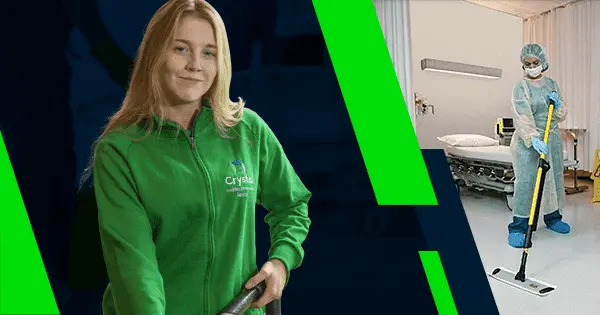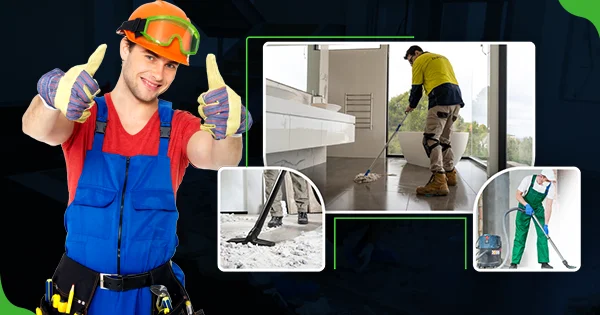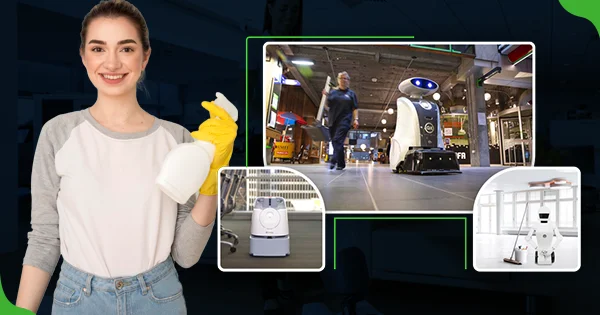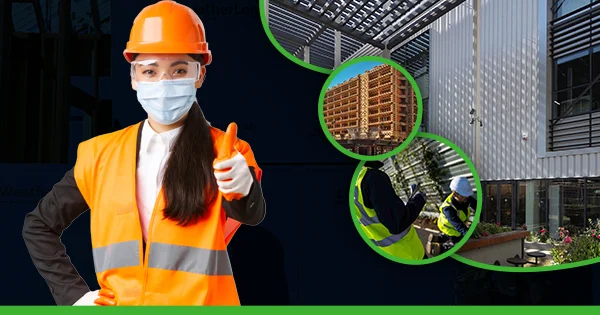Cleanliness is of utmost importance in laboratories and cleanrooms. These controlled environments require a high level of cleanliness to ensure accurate research results and maintain product quality. Science plays a crucial role in achieving optimal cleanliness by providing knowledge and understanding of contamination sources and pathways. In this article, we will explore the importance of cleanliness in laboratories and cleanrooms, the role of science in achieving it, and the key principles and techniques involved in effective cleaning.
Understanding the Importance of Cleanliness in Laboratories and Cleanrooms
Inadequate cleanliness in laboratories and cleanrooms can have serious consequences. Contamination can compromise research accuracy, leading to unreliable results and wasted resources. In industries such as pharmaceuticals and electronics, where product quality is critical, contamination can result in costly recalls or even harm to consumers. Additionally, contamination can also pose health risks to laboratory personnel, as certain substances or microorganisms may be hazardous.
Cleanliness is directly linked to research accuracy and product quality. In laboratories, even the smallest particles or microorganisms can interfere with experiments or contaminate samples. Cleanrooms, on the other hand, are designed to maintain extremely low levels of airborne particles to protect sensitive processes or products. Any deviation from the required cleanliness standards can have significant consequences.
The Role of Science in Achieving Optimal Cleanliness
Science provides the foundation for achieving optimal cleanliness in laboratories and cleanrooms. Understanding the scientific principles behind cleanliness is essential for effective cleaning practices. This includes knowledge of contamination sources and pathways, as well as the behaviour of particles or microorganisms in different environments.
Contamination sources can vary depending on the specific laboratory or cleanroom environment. Common sources include human activity, equipment, air supply, and raw materials. Understanding these sources allows for targeted cleaning strategies to minimise contamination risks.
Contamination pathways refer to how contaminants spread within a laboratory or cleanroom. This knowledge helps identify critical areas that require special attention during cleaning. For example, understanding airflow patterns can help determine the most effective locations for air filters or the placement of equipment to minimise contamination risks.
Key Principles of Effective Cleaning in Laboratories and Cleanrooms
Effective cleaning in laboratories and cleanrooms involves several essential steps and processes. These include:
✔️ Pre-Cleaning
Before starting the actual cleaning process, it is important to remove any loose debris or visible contamination. This can be done using vacuum cleaners or compressed air.
✔️ Cleaning
The cleaning process typically involves the use of cleaning agents or disinfectants to remove contaminants. It is important to follow manufacturer instructions and use appropriate concentrations for effective cleaning.
✔️ Rinsing
After cleaning, rinsing with clean water helps remove any residue from the cleaning agents or disinfectants. This step is crucial to prevent any potential interference with research or product quality.
✔️ Drying
Proper drying is essential to prevent the growth of microorganisms or the accumulation of moisture, which can lead to contamination. Air drying or the use of clean, lint-free towels are common methods for drying surfaces.
Proper training and adherence to cleaning protocols are also crucial for effective cleaning. All personnel involved in cleaning activities should receive thorough training on proper techniques, safety precautions, and the use of cleaning agents or disinfectants. Adherence to protocols ensures consistency and reduces the risk of errors or oversights.
Choosing the Right Cleaning Agents and Disinfectants for Specific Environments
Choosing the appropriate cleaning agents and disinfectants is essential for maintaining cleanliness in laboratories and cleanrooms. Different environments may require different products based on their specific needs and requirements. Cleaning agents can be categorised into three main types: detergents, solvents, and enzymatic cleaners. Detergents are commonly used for general cleaning purposes, while solvents are effective for removing oils, greases, or other organic substances. Enzymatic cleaners are specifically designed to break down biological contaminants.
Disinfectants, on the other hand, are used to kill or inactivate microorganisms. They can be classified into several categories, including quaternary ammonium compounds, chlorine-based disinfectants, hydrogen peroxide-based disinfectants, and alcohol-based disinfectants. The choice of disinfectant depends on the specific microorganisms to be targeted and the compatibility with the surfaces being disinfected. When selecting cleaning agents and disinfectants, factors such as efficacy, safety, compatibility with surfaces, and environmental impact should be considered. It is important to consult the manufacturers’ guidelines and follow recommended concentrations and contact times for optimal effectiveness.
Mastering the Art of Proper Cleaning Techniques in Laboratories and Cleanrooms
Proper cleaning techniques are essential for effective cleaning in laboratories and cleanrooms. Here are some practical tips and techniques:
✔️ Use A Systematic Approach
Start cleaning from the cleanest areas and gradually move towards the dirtiest areas to prevent cross-contamination.
✔️ Pay Attention to Critical Areas
Critical areas, such as laminar flow hoods or biosafety cabinets, require special attention during cleaning. Follow specific protocols for these areas to ensure optimal cleanliness.
✔️ Use Proper Equipment and Tools
Use dedicated cleaning equipment and tools to prevent cross-contamination. Avoid using materials that can generate particles or fibres that may contaminate the environment.
✔️ Follow Proper Wiping Techniques
When wiping surfaces, use a consistent motion in one direction to avoid spreading contaminants. Change wipes frequently to prevent recontamination.
✔️ Clean Spills Immediately
Spills should be cleaned immediately to prevent the spread of contaminants. Use appropriate absorbent materials and follow proper disposal procedures for hazardous spills.
The Science of Contamination Control: Preventing Cross-Contamination in Clean Environments
Cross-contamination is a significant concern in clean environments such as laboratories and cleanrooms. It refers to the transfer of contaminants from one area to another, potentially compromising the cleanliness of the entire environment. Preventing cross-contamination requires a thorough understanding of contamination sources and pathways.
To prevent cross-contamination, it is important to establish clear protocols and procedures for handling materials, equipment, and personnel movement. This includes proper gowning procedures, designated areas for specific activities, and the use of dedicated equipment for different areas or processes.
Regular cleaning and disinfection of shared equipment or surfaces is also crucial to prevent cross-contamination. This includes items such as pipettes, centrifuges, or workbenches that may meet multiple samples or materials.
The Role of Technology in Enhancing Cleaning Efficiency and Effectiveness
Technology has played a significant role in enhancing cleaning efficiency and effectiveness in laboratories and cleanrooms. Advancements in cleaning technologies and equipment have made it easier to achieve optimal cleanliness. Automated cleaning systems, such as robotic cleaners or ultrasonic cleaners, can provide consistent and thorough cleaning. These systems can reach areas that may be difficult to access manually and reduce the risk of human error.
Innovations in monitoring technologies have also improved cleanliness control. Real-time monitoring systems can provide continuous feedback on cleanliness levels, allowing for immediate corrective actions if deviations occur. However, it is important to note that technology should not replace proper training and adherence to cleaning protocols. Technology should be used as a complement to manual cleaning processes, not as a substitute.
The Importance of Regular Maintenance and Monitoring in Maintaining Clean Environments
Regular maintenance and monitoring activities are essential for maintaining clean environments in laboratories and cleanrooms. These activities help ensure that cleanliness standards are consistently met, and deviations are promptly addressed. Regular inspections and audits should be conducted to assess the cleanliness of the environment. This includes visual inspections, air quality testing, surface swabbing, and particle counting. Any deviations from the required cleanliness standards should be documented and corrective actions should be implemented.
Maintenance activities, such as filter replacements or equipment calibrations, should be performed according to a schedule to prevent any potential contamination risks. Regular maintenance helps ensure that equipment is functioning properly and that cleanliness standards are maintained.
Addressing Challenges and Common Mistakes in Cleaning Laboratories and Cleanrooms
Cleaning laboratories and clean rooms can present several challenges. Common challenges include:
✔️ Human Error
Human error can lead to oversights or mistakes in cleaning processes. Proper training and adherence to protocols can help minimise human error.
✔️ Contamination from Outside Sources
Contamination can enter laboratories or clean rooms through air supply, personnel, or equipment. Proper air filtration systems, gowning procedures, and equipment sterilisation protocols can help mitigate this risk.
✔️ Difficult-To-Reach Areas
Some areas may be difficult to access for cleaning, leading to potential contamination risks. Using appropriate cleaning tools or considering alternative cleaning methods can help address this challenge.
To overcome these challenges, it is important to establish clear protocols, provide thorough training, and regularly review and update cleaning procedures based on feedback and lessons learned.
The Future of Cleaning: Advancements in Scientific Cleaning Methods and Technologies
The future of cleaning in laboratories and cleanrooms holds promising advancements in scientific cleaning methods and technologies. Emerging trends include:
✔️ Nanotechnology-Based Cleaning Agents
Nanoparticles have shown the potential in enhancing the effectiveness of cleaning agents by increasing their surface area and reactivity. This can lead to more efficient removal of contaminants.
✔️ Self-Cleaning Surfaces
Researchers are exploring the development of self-cleaning surfaces that can repel contaminants or have antimicrobial properties. These surfaces could significantly reduce the need for manual cleaning.
✔️ Robotics and Automation
The use of robotics and automation in cleaning processes is expected to increase. Robotic cleaners can provide consistent and thorough cleaning, reducing the risk of human error.
✔️ Real-Time Monitoring and Feedback Systems
Advances in monitoring technologies will continue to improve cleanliness control. Real-time monitoring systems can provide immediate feedback on cleanliness levels, allowing for prompt corrective actions.
These advancements have the potential to revolutionise cleanliness in laboratories and cleanrooms, making cleaning processes more efficient, effective, and reliable.
Cleanliness is crucial in laboratories and cleanrooms to ensure accurate research results and maintain product quality. Science plays a vital role in achieving optimal cleanliness by providing knowledge and understanding of contamination sources and pathways. Effective cleaning involves following key principles, choosing the right cleaning agents, mastering proper cleaning techniques, and preventing cross-contamination. Regular maintenance and monitoring activities are essential for maintaining cleanliness, while technology can enhance cleaning efficiency and effectiveness. Addressing challenges and common mistakes in cleaning processes is crucial for maintaining optimal cleanliness. The future of cleaning holds promising advancements in scientific cleaning methods and technologies that will further improve cleanliness in laboratories and cleanrooms.










